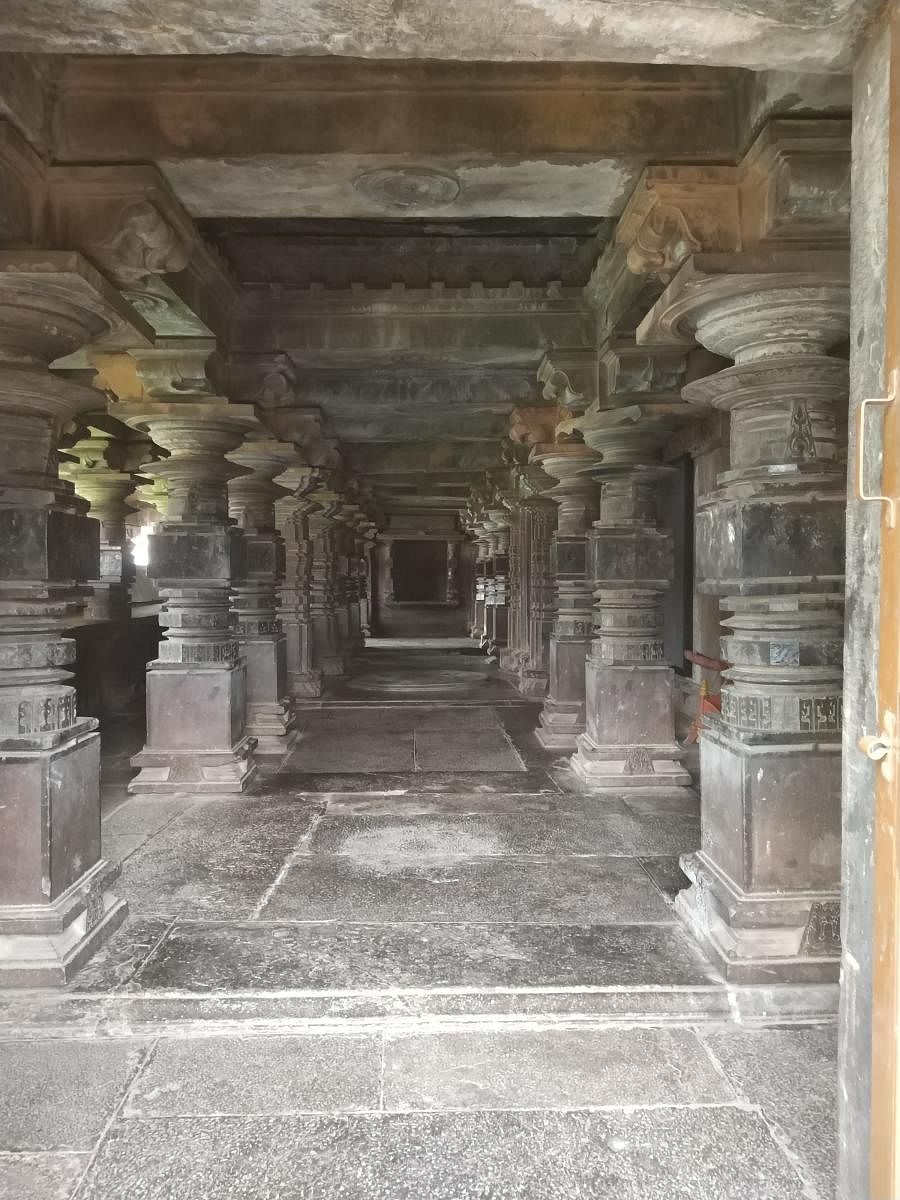Read the Kadamba language in stones



Archaeologist Gabriel Jouveau-Dubreuil, in Dravidian Architecture, says that a book on architecture should not resemble a tourist’s guide. “It is necessary not only to make one see things, but to make one comprehend them, to evolve general ideas, and to discover principles. It is, therefore, necessary to compare the monuments everywhere, to give them a systematic classification; and to set forth the laws according to which they have been constructed, it is a matter of great importance to describe the anatomy and the palaeontology of the edifices.”
It is this systematic study of architecture over time, especially temple architecture, that has allowed us to understand that temples of ancient India were built with much thought. Location, deity, people, topography and climatic conditions were considered before temple construction. And the motifs, façades, ornamentation, pillars, mantapas and shikhara styles are signs of an intelligent society.
Belagavi district boasts of several rules, the Kadambas being one of them.
The Kadamba rulers, who worshipped Saptakoteshwara of Goa, built several temples in the region of their reign.
The Halasi copper plates discovered speak of this region being the capital of nine Kadamba kings. From around the 6th century to the 8th century, the Chalukyas ruled this area, later succeeded by the Rashtrakutas. The Rattas (875-1250) ruled from Belagavi as their capital, though they had frequent fights with the Kadambas of Goa. Around 1208, the Rattas overpowered the Kadambas, but then lost to the Yadavas of Devagiri in 1250.
Belagavi region has been ruled later by the Delhi Sultanate, the Bahmanis, the Mughals, the Peshwas, and also the British for long.
All the regimes have left an indelible mark on its culture, language, cuisine and specifically, temple architecture.
Several temples of Belagavi boast of the Kadamba style of architecture. Noteworthy are the Narasimha temple at Halasi, the Kamala Narayana temple at Degaon, the Bhootnath temple in the complex of Fort Torgal, the Kamala Basadi, the Ramalingeshwara temple at Bailhongal, the Mahalingeshwara temple overlooking the Gokak falls, etc. This special style was the precursor of the Hoysala style, and is also seen at Aihole, Badami and Hampi.
The resplendent, eponymous Kamala Narayana temple stands in the small village of Degaon, around 55 km from Belagavi and 5 km from Kittur. It’s maintained by the Archaeological Survey of india. It was commissioned by the queen Kamaladevi of Shivachitta Permadi, the Kadamba ruler, around 1174.Queen Kamaladevi, being an ardent devotee of Saptakoteshwara, also got the Vishnu temple built near Khanapur. This temple reminds one of the Kamala Basadi and the Mahadev temple in Tambdi Surla near Goa.
The Kamala Narayana temple is a trikuta (comprising three parts). A circular stone platform is seen in the middle of the temple with a stone tortoise. The first part has a small chamber dedicated to Goddess Mahalakshmi, the second one has the main deity, Lakshmi Narayana, where she is seated on the lap of Vishnu, and the third one has Kamala Narayana, flanked by two attendant chouri bearers.
The main ceiling has an astounding lotus carved in stone. A larger version of this can be seen at the Kamala Basadi, but which has a tirthankara depicted at the confluence of each petal, a total of 72 in all, denoting 24 each in the three eras.
A large stone inscription in Kannada, housed in glass for protection, celebrates Goddess Mahalakshmi here and mentions that Tippota was the sthapati (architect) of this temple. A series of finely carved pillars support the temple from inside. The row of pillars coincides at a single point when seen from afar. The pillars are embellished with inverted cobras carved on the corbels. This feature is peculiar to the temple.
The temple is as beautiful from outside as it is from inside. Dravida, Shekhari and Nagara-style miniature temples are depicted on the façade.
Rows of lions, female dancers, a peculiar image of a young woman writing an inscription, a human picking mangoes, as also an amorous couple are also depicted.
In many ancient temples, a monkey is frequently seen with a string attached. It denotes the human mind that wanders but needs control.
The Kadamba emblem of an elephant trampling a horse can also be seen. The lateral side has a carving of an entwined snake duo, which then symbolised fertility. The rear side of the temple is bereft of decoration.
The shikara or tower of a temple distinguishes it in the form of the style used. Shekhari or Bhumija style of shikhara is seen on reliefs on the outer pilasters. It is noteworthy that the architects created an illusion of several temples on one structure by using this technique. These are the two distinguishing sub-styles of the Latina shikhara style seen in India.
Although the main temple does not have a distinctive shikhara, the lateral walls have niches decorated with several miniature versions of this.